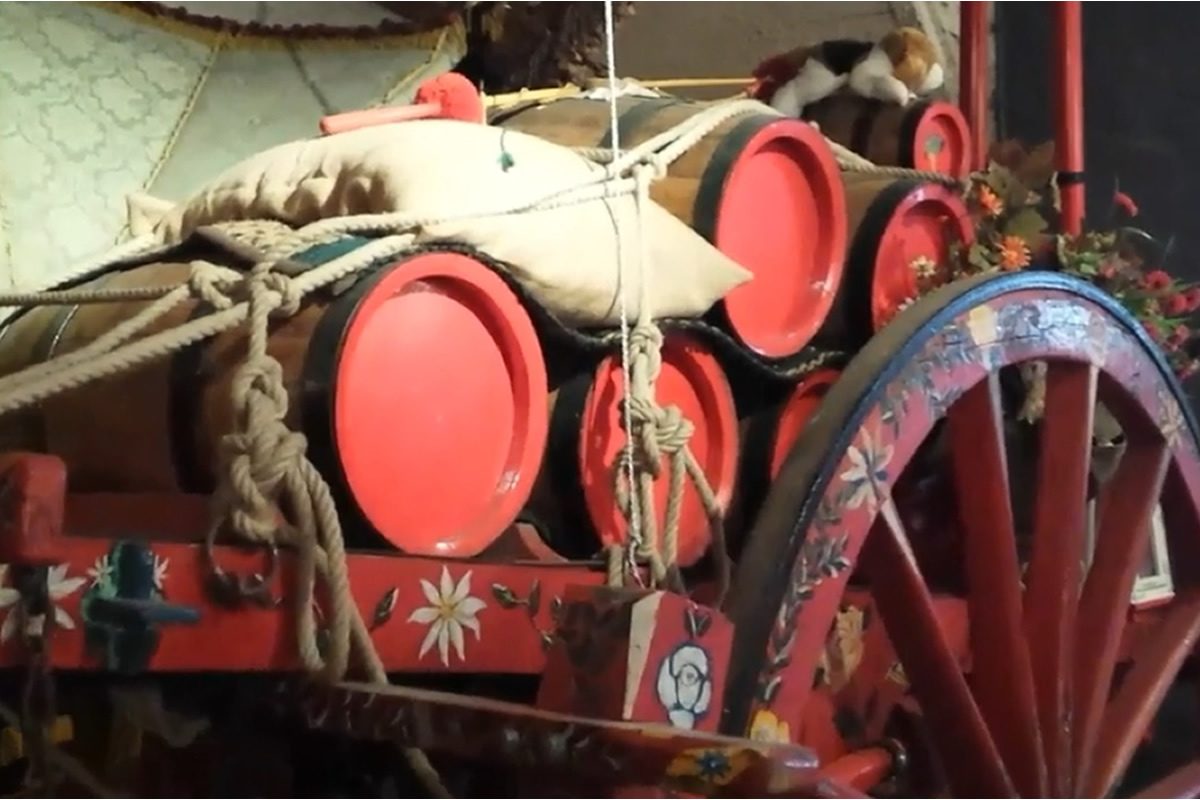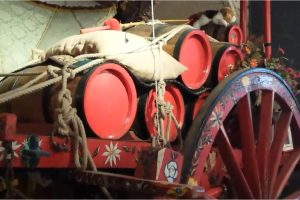The ex-church dates back to the year 1100; no longer used for religious purposes has become private property and throughout the years converted for various activities including a wool mill and a barn. In 1850, under the Missionaries of the Precious Blood, it was re-opened for worship although in 1870, just 20 years later, it became state property and turned into an entertainment place, Casa del Fascio (Office of the National Fascist Party) and a home for evacuees. In 1974, it was sold to the council of Marino by the government and used for cultural events. After the last restoration work, it was assigned to the museum and opened in 2000.
It has three naves with a central apse and a stairway leading to the entrance. Today, there are only remains of the central nave and right hand aisle, each one featuring a chapel.
The inside is Gothic style, as the pointed arches demonstrate; during the renovation work, several graves and fragments of Christian frescoes were discovered.
The Museum of Umberto Mastroianni now contains the collections previously displayed at the civic Antiquarium, which used to be located inside the Colonna Palace. It preserves findings dating back to the proto-historical period, Roman and Medieval periods, as well as many notary deeds, some dating back to the 16th century. Besides displaying important archaeological discoveries, the museum organizes activities such as exhibitions, conferences, concerts, guided tours and thematic itineraries.
The “Bottaio” Museum
A unique collection of its kind in Italy: a whole set of tools by Alberico Bini, Marino’s last cooper master. The collection consists of 160 tools dating back to the last twenty years of the nineteenth century and is an important testimony of past work systems and the “secrets of the trade” passed down from father to son for four generations. The Bini family workshop was located in Via Cairoli and its maximum activity is recorded in the first decades of 1900 and in the second post-war period up to 1984. The cooper is not a carpenter: he works essentially on curved surfaces, the precision of the execution is account of the capacities and tightness of the wine vessels. Barrels, tubs, barrels, tubs and vats handcrafted with planes, burchielli, gauges, rulers, axes and saws of different sizes, shapes and purposes and recently restored by the volunteers of the Archeoclub Colli Albani Association. The first phase to make a barrel is certainly the choice of wood, since it gives the essence to the product (in the Bini collection the woods chosen are chestnut and oak): the wood is worked for the yield of the 3 / wide slats. 4 cm; using temporary iron circles (which give the product capacity) align the staves until the container is completed; the curvature of the staves is given by the heat, heating the wood by lighting a fire or steam; the different degrees of roasting are other essential components for the essence of the product; the finally curved staves are cut to make them even and channel the bottom; the last phase is the marking of the finely crafted wooden containers.
The Wine Museum
The “Wine Museum” conceived and built by Marco Fabi is a private collection of oenological and viticultural equipment typical of Marino and the Castelli Romani in use until a few decades ago. Together with the “Museo del Bottaio” and the “Museo del Carretto a Vino”, the Fabi collection is aimed at deepening an aspect that has always characterized the marine economy: wine and its manufacturing processes, from working tools in vineyards to the final vinification of the grapes. Wine is nothing more than the alcoholic fermentation of grape juice thanks to yeasts in the grape skin that transform the sugar in the pulp into ethyl alcohol and carbon dioxide. The very first phase of realization is certainly the harvest, followed by pressing (in tubs, barefoot) and fermentation for one day, a week or even ten days; the vinification differs from white wine to red wine; the last two phases are those of racking and aging, decanting the purified wine from the solid residues and marc that remain at the bottom of the vats and barrels. Even this last phase differs for the white wines that are bottled and the red wines that will be left to age for up to five years.
The Wine Cart Museum (Museo del carretto a vino)
The “Wine Cart Museum” is part of the same circuit as the “Cooper Museum” and the “Wine Museum”. Set up by the Pro Loco in October 2002 and housed in a former tavern, so called because it is used only for serving and tasting wine, it is located in Via Cola di Rienzo 4/5 and testifies to the flourishing period of wine marketing. The specimen that can be admired inside dates back to the early 1900s and is almost intact. It has two wheels and a platform with two rods for towing the horse. Interesting is the waxed and padded hood that the carter used to shelter from the cold. The canopy was customized with colors, fantasy decorations, cowbells, bells and plumes for the horse. There was no shortage of tools useful for the care of the steed such as the hay sack and the bucket. Il Carretto a Vino is the Ambassador of the Castelli Romani as was “Ciceruacchio” (in the century Angelo Brunetti) who, while traveling, conveyed the ideals of the Roman Republic. The marinese carters conveyed the distinctive elements of their place of origin, thus contributing to the notoriety of Marino, almost “social” means ante litteram. The wine cart was the undisputed protagonist of the Roman countryside until the last postwar period. The carts were different from each other for the decorative devices and the rattles applied according to the place of origin (Genzano, Marino, Frascati …), or the type of wine or the agricultural estate of production. The load of a cart was 8 barrels of 60 liters, arranged transversely along the floor and stopped by ropes (plus a 5-liter barrel positioned near the carter). Carters never walked alone. They were always in the company of their guard dogs, necessary to defend themselves from brigands, both for the outward journey in which they transported wine, and for the return journey where, well hidden, they concealed the proceeds of the day. The advent of the engine with trucks and lorries, around the 1950s, supplanted the use of the cart to transport wine.


 Visit Castelli Romani
Visit Castelli Romani 


